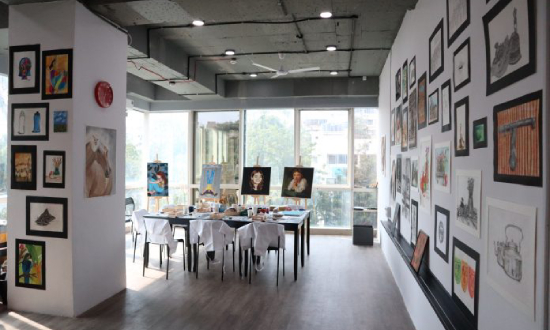This list applies to us too!
Written by Harsimran Juneja
Building trust in the field of education takes time. It is something that you experience only after you’ve enrolled yourself and started your classes. Yet, you are nearly always expected to pay your fees upfront on the basis of perhaps a short tour of the classes, a few references and a couple of meetings with the personnel. Based on our experience over the last 5 years, we’ve put together a list of things that our students have looked for in our classes. Maybe, this could be a starting point for you?
- Environment
For an art or design class, it is imperative that the environment be conducive for creativity, imagination and experimentation. Are there resources such as books, internet etc. in the classes to help you with your creative learning? Is the infrastructure flexible enough to allow you to work individually as well as in a group? Is the classroom set up in a conventional or an unconventional manner? And how do you prefer it?
To identify if the environment is the right fit for you, it helps to know what you’re looking for. Ask yourself, what kind of an environment would you like to learn in? Learning should be enjoyable and not something that you are forced to do. In our Foundation in Art and Design course in Mumbai and Ahmedabad, that is what we strive to achieve.
2. Faculty
An academy’s classes are only as good as their faculty. It is crucial to understand where your faculty comes from and what experience they bring into their classrooms for you. In our opinion, it is highly beneficial to learn from faculties that are not just full-time teachers, but also practitioners. This enables the faculty to bring in real-life industry experience into the classroom that can be highly beneficial. Additionally, art and design are very broad subjects. Make the effort to learn more about who teaches what at the academy? This will help you understand the roles and responsibilities of different faculties and also the strength of the academy’s staff.
3. Teaching Methodology
Art and Design education requires a methodology that is different from our regular schooling system. Most colleges in India and abroad do a common foundation year in the first year of their respective programs, not just to help you explore different subjects, but to also get you accustomed to a new way of teaching and learning.
When you look for your art or design classes, take the effort to understand the teaching methodology. Is it a top-down approach where the teacher commands and you obey? Or is a more student-centred learning environment that allows you to learn what you wish to? Both models have their advantages and disadvantages, but before you make the choice, it is crucial for you to understand what model would be the best for you. At our art and design academy in Ahmedabad and Mumbai, you would be able to witness a student-centred environment that focuses on the educators being facilitators and mentors as opposed to just teachers.
4. Comfort
Art and Design classes are a fairly long-term commitment – anywhere between 6 -12 months in most cases. Before you make that commitment, it is crucial that you feel comfortable with the people and the environment of the classes or the academy. Visit your chosen classes and interact with the faculty or the people out there to check how comfortable they make you feel. Take a tour of the classes or even experience a trial class to understand what the learning environment might be like for you. Do this at multiple academies before taking your decision, if required. But ensure that you feel comfortable and safe before joining your classes.
5. Flexibility
In India, with school comes additional tuition for most students. This restricts their time and also adds to their workload. If such is the case for you, then classes that offer a more flexible time schedule for you could be ideal. Ask your chosen classes if they offer any flexibility in terms of times and classes. Can you choose your own days and time? Can you occasionally shuffle classes if required? Can you occasionally sit for longer hours in case of holidays? Such flexibility can allow you to focus on your studies and your extra-curricular activities in a much-balanced way.
6. Additional Resources
Most academies are experts in their respective domains. They possess information and resources that can otherwise be hard to find. Identify your requirements and ask your chosen classes if they can help you with what you’re looking for. For example, classes for learning digital softwares such as the ones within the Adobe Creative Suite or books for learning art / design history or information on art and design colleges etc. When you build an art portfolio or a design portfolio while preparing to study abroad, these resources can be really useful.
Every student responds differently to different factors. We at Uno Lona Academy believe that in certain situations, our classes may not be the right fit for you either. And hence, we encourage you to consider the points we mention above before choosing your classes. This list may not be exhaustive for things to look for in a classroom. But the above-mentioned points are some things that we have identified to be important for most of our students. We encourage you to write to us on [email protected] if you have any more pointers that you believe are crucial for decision making while choosing your art and design classes.



1 Comment
创建免费账户
March 21, 2024Your article helped me a lot, is there any more related content? Thanks!